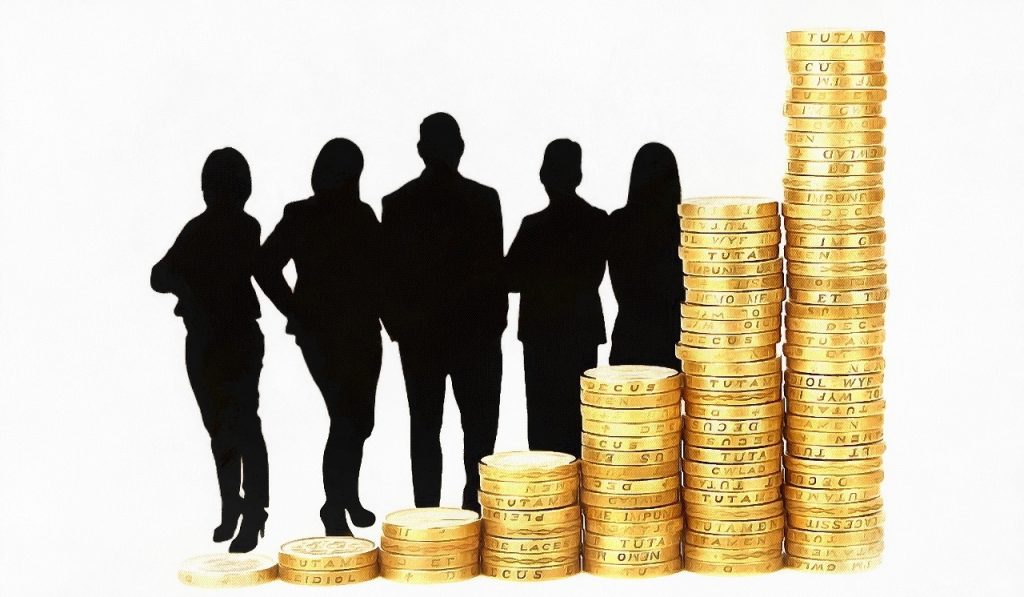A key argument for Bitcoin is that this cryptocurrency does not have a tangible value to support its fundamental. It is neither incomparable to commodity money (e.g., gold) that holds its intrinsic value, nor as secure as a regulated currency or commonly known as fiat money, which is backed by a particular government. Importantly, the Bitcoin network is not making sense to some people as it consumes tremendous energy for proof-of-work consensus. As such, some economists and academicians hold a strong argument on the carbon footprint of Bitcoin on environmental sustainability. Thus, it is essential to have an in-depth view of the Bitcoin’s value and its sustainability, as compared to our currently used currency — fiat money.
In the United Kingdom, the role of a cryptocurrency accountant has gained prominence as businesses and investors grapple with the integration of digital assets into traditional financial frameworks. A skilled cryptocurrency accountant uk possesses the knowledge and understanding of both traditional accounting practices and the unique challenges presented by blockchain technologies. These professionals play a crucial role in ensuring compliance with tax laws, offering strategic financial advice, and providing a comprehensive view of the financial implications of engaging with cryptocurrencies. As discussions on Bitcoin’s sustainability persist, the role of a cryptocurrency accountant becomes increasingly vital in helping individuals and businesses make informed decisions about their digital asset holdings within the broader financial landscape.
Let’s take the US dollar ($) as an example of our fiat money discussion. According to the US Federal Reserve, there was approximately $1.7 trillion in circulation as of January 31, 2019. For information, the dollar is not only for commodities trading (e.g., crude oil) but also as the central marker in exchange rate regimes and as an essential reserve currency. In other words, the dollar is almost a universally accepted medium of exchange for all kinds of transactions in the current market. An important note is that while the digital dollar exists in every online transaction today, the dollar is still tied to physical fiat currency (example: $1.2 trillion cash in banks/institutions + $0.5 trillion cash in hand by people = $1.70 trillion) and is stored somewhere. That is, even if we do not receive the physical money from our monthly salary (e.g., online transfer to the registered banking account), the exact value is still stored somewhere physically (e.g., banks, retailers, or currency exchange centre).

To support our online money transfers, third-party service providers (rather than banks) have been formed to facilitate online payment systems and electronic funds transfers, such as PayPal, Visa, Master, Alipay, WeChat Pay, and Apple Pay. Indeed, banks and service provider companies have to operate and store all information to data center, either within their IT infrastructure or somewhere on this earth, such as at the China Telecom Data Centre, Lakeside Technology Centre and the Citadel (US), Kolos Data Centre (Norway), and Tulip Data Centre (India). As a result, when we make a $10 purchase in the digital world, a lot of direct and indirect resources are required in processing our so-called less than 2-second online payment. The online banking facilities that we are using at the moment merely representing a physical version of fiat currency (e.g., the US dollar) into digital context, but not a real digital money that is managed by the Internet (i.e., the Internet of money). Here is the value proposition of banks and service providers, they are the one facilitates the process of online transaction, such as improving the interface of the application and the most important, to perform back-end operation of electronic transfers that reconcile between digital and physical values within the monetary system. For this reason, nowadays, more resources are needed to safeguard our money although we do not hold our money physically, such as vault maintenance (e.g., electricity and vault technology), human resource (e.g., security guards and officers who manage the database), 24/7 IT infrastructures (e.g., data center, servers, and computer security), and other expenditures (e.g., insurance, warehouse, and security guard gears). Obviously, no one would argue why we put so many resources to safeguard and process our fiat currency since we wanted to ensure our money is secure in both physical and digital contexts.
Recently, many people have made the comparison between the power consumption of Bitcoin and our current banking system. An interesting finding shows that Bitcoin is “more efficient than a very conservative calculation of the cost of the global banking system” (Domingo, 2017). My key point here is NOT trying to support Bitcoin but to let readers aware of our current online transaction system that involved bankers and service providers are NOT absolutely free from carbon footprint.
Next, what is the value of Bitcoin? This is a very complicated question. We first have to understand why we trust fiat currency and why some people are more willing to buy Bitcoin. Primary, it is about our trust in the government; we would rather keep our money in the form of fiat currency as it is a medium of daily exchange, and the value is perceived to be stable over time. However, people who live in hyperinflation countries, such as Venezuela and Zimbabwe, would prefer an alternate currency (e.g., the US dollar, Euro, or even Bitcoin) that can maintain their value of money since they lost trust in their local banking system. Unfortunately, it is not an easy process for a foreigner to open a bank account in a developed country without physically visit and verify their official documents (e.g., passport, ID card, proof of address). For example, in Finland, as far as I know, a foreigner cannot open a bank account in Nordea, OP, and S-Pankki without physically presenting his/her official documents. Thus, virtual currency such as Bitcoin should be the only few options for people who live in hyperinflation countries to store their value of money online.

Therefore, Bitcoin is designed for store-of-value (marathon concept), but not for short-term investment for maximizing personal profit. This is a fundamental of Bitcoin as it is initiated during the recession in 2009. Bitcoin is not owned by a corporation (thus, it will not be mandatory shut down by governments), and it is a decentralized network that is maintained by people from all around the world without a central authority. Bitcoin holders have full control of their money, and no authority or government can control holders’ transactions at the global level. No government or bank can decide to freeze Bitcoin holders’ accounts or confiscate their holdings. That is, Bitcoin holders, can cash in and cash out at any time and any place online since there is enormous demand globally. An important to note is that only 21 million units of Bitcoin are available in this market. To the best of my knowledge, this is the first and the only scarce cryptocurrency that is built with a limited supply.
People store money on Bitcoin because they put trust in its technology features: immutability, uniformity, and transparency. In a layman’s term, Bitcoin ensures that all incurred transactions are securely recorded in a decentralized and transparent system, without facing the risk of being removed or updated in the future. Thus, it is only designed to create and read functions, but not with the update and delete features (i.e., based on CRUD). It sounds simple, but this is the core value proposition of Bitcoin, and this is what people are looking for: open, borderless, neutral, censorship-resistant, and decentralized system (i.e., five pillars of Bitcoin). That is why people are confusing about the value of Bitcoin as many of us (including myself) are trying to figure out the intrinsic value of Bitcoin. Yet, it is about a trustworthy platform that promises the communication of value on the Internet.
Conventionally, we trust governments will fulfil their promises to retain the value of our money by carefully managing the fiat currency (i.e., institutional-based money). In the context of Bitcoin, people store their money as the network-based money because they first perceive the peer-to-peer bitcoin network is trustworthiness and secured. I use the term “communication of value” instead of money because Bitcoin is a form a cryptocurrency or crypto-asset, which without real value collateralization, is therefore considered a token with “empty container”. Bitcoin is yet considered a form of money because of highly volatile and unpredictable. Further, in Finland, it is not possible to use Bitcoin as a medium of daily exchange since I could not buy my lunch and pay for public transport with Bitcoin. In spite of these limitations, Bitcoin holds its strong communication of value in the views of holders: PUDDLES
Portability
Bitcoin is highly portable as holders can “transport” the Bitcoin with them from point A to point B effortless. They just need to remember their private keys or travel with a hardware wallet (similar size as a flash drive)

Unstoppable
This year — 2019 — is the tenth anniversary of Bitcoin. Still, we never know the real identity of Mr Satoshi Nakamoto. So, who is the person-in-charge of Bitcoin? Compared to other cryptocurrencies, we can quickly identify the person-in-charge, such as Vitalik Buterin from Ethereum and Justin Sun from TRON. Thus, the authority and government could somehow influence the directions of those crypto projects. However, this is not the case for Bitcoin since no single government can put pressure on the entire bitcoin community around the world. Therefore, as long as the Bitcoin technology is secured, I assume holders, developers, and miners will always hold a strong belief in Bitcoin as a trustworthy platform and continue their faith, development, mining, consensus, trading, and other activities with Bitcoin.
Durability
Due to decentralized system that is managed by anonymous people from all around the world, Bitcoin is considered highly durable and secured as it will not be shut down or replaced (unless a new/future technology, such as quantum computer could effortlessly reverse the bitcoin network, I asked few experts from software engineering and IT from Finland, they claim that it is near to impossible even with the quantum computer. Interesting thought: Giant tech company with enormous processing power such as IBM, Google, Facebook, Microsoft should be able to “attack” the security of bitcoin network if it is possible right? What do you think?)
Divisibility
A key concern is how 21 million Bitcoins could serve the economy with 7.7 billion people? As we are not a technical guy (just like me), we might not even know that 1 Bitcoin (BTC) can be divided down to 8 decimal places. Therefore, 0.00000001 BTC (equivalent to 1 satoshi; XBT) is the smallest amount that can be handled in a transaction. Does this sound like a “money printing” concept? But this is very different from the increase in the money supply. To illustrate, imagine that you hold 10 BTC today when it is being divided into 100,000,000 XBT per BTC; then, you will have 1,000,000,000 XBT to spend. However, in the context of fiat currency, when the government prints more money, basically, we still hold the $10, but we are not sure how much the value of $10 will be affected by the new monetary policy

Liquidity
Liquidity is about how big the trade-off is between the speed of the sale and the price it can be sold for. A house is an example of low liquidity as it requires many processes, whereas a stock/share is an example of high liquidity since we can get back our money as long as someone has bought our share from the exchange centre. Today, Bitcoin is considered high liquidity because it is tradable in most of the crypto-trading platforms, such as Binance, KuCoin, Coinbase, BitMEX, and Bitfinez
Acceptability
It is challenging to make currency exchange with a less popular fiat currency, such as Vietnamese Dong, Cambodian Riel, and Zimbabwean dollar. In Vietnam, you will be surprised that Vietnamese business people are more willing to accept the US dollar than the Vietnamese Dong. How about Bitcoin? It is not really common or acceptable in well-developed countries. Still, due to the Internet and 24/7 online market, holders could actually store and withdraw their Bitcoin borderless, and Bitcoin is always at the highest market capitalization in the cryptocurrencies trading
Scarcity
This is the unique part of Bitcoin (does not apply to other cryptocurrencies); it only has 21 million units of Bitcoins. Such uniqueness is perceived to be one of the value propositions and directly leads to the Bitcoin price. That’s why holders are so excited about the next Bitcoin halving on May 14, 2020
In conclusion, I think Bitcoin does have its intrinsic values as a store-of-value that derived from the communication of value (PUDDLES) on the Internet. On the other hand, it is not yet a full form of currency (I would rather categorize it as a new form of current asset, but not “cash”). To further clarify, I do not hold any Bitcoin at the time of writing this post. My purpose is to give sincere and neutral views on Bitcoin as this digital currency already has ten years of history. And if you are someone who want to learn blockchain, I would recommend you to learn it from EC-Council. Their program serves the best mix of academic and practical knowledge, to help you become a professional in need.
You may also like,
The 5 Ways to Truly Innovate in Business




